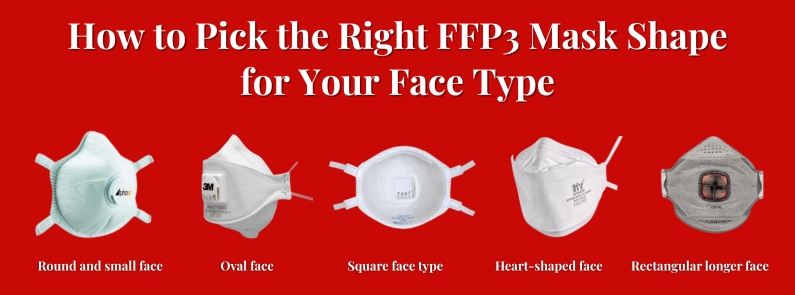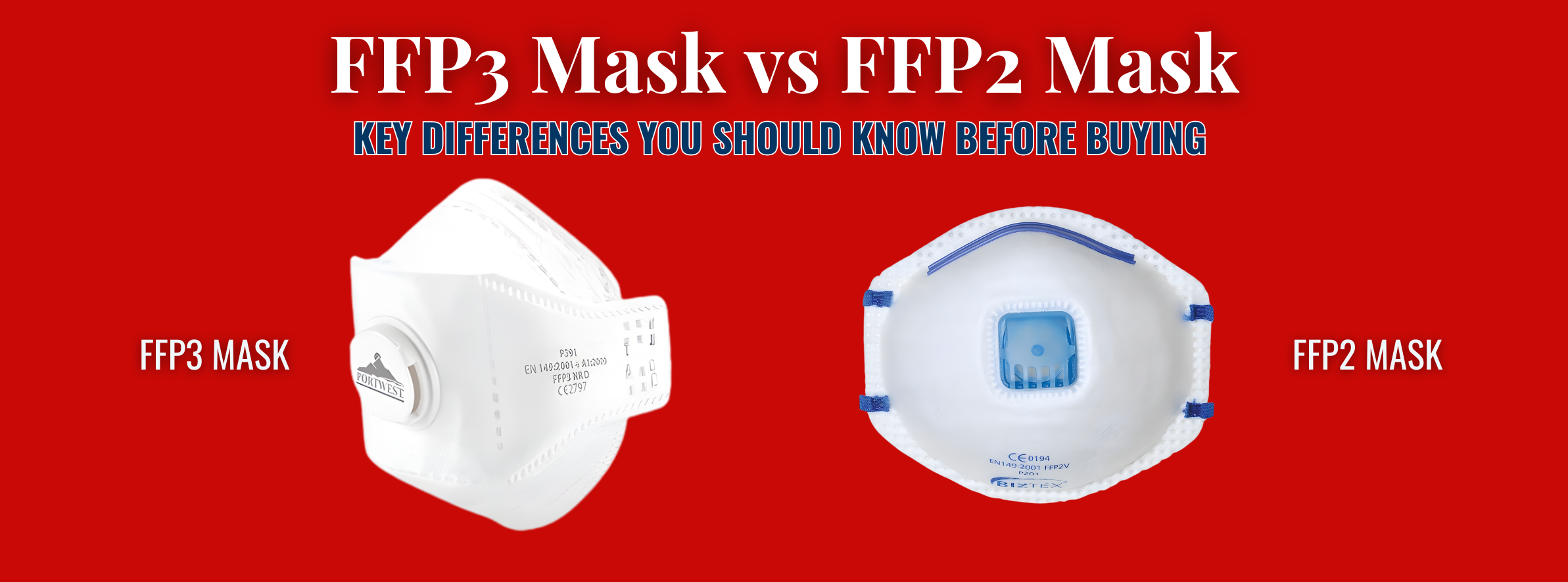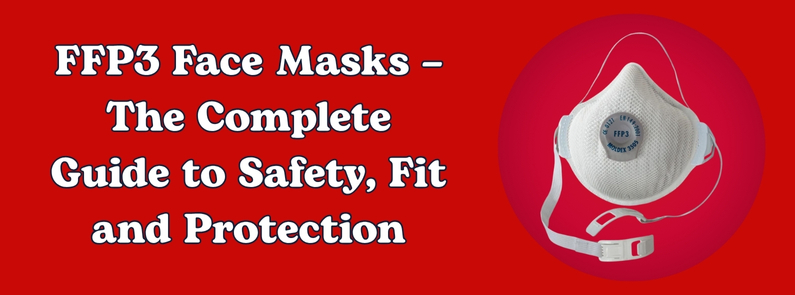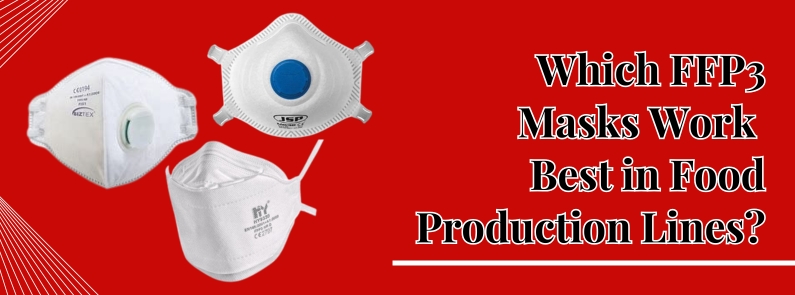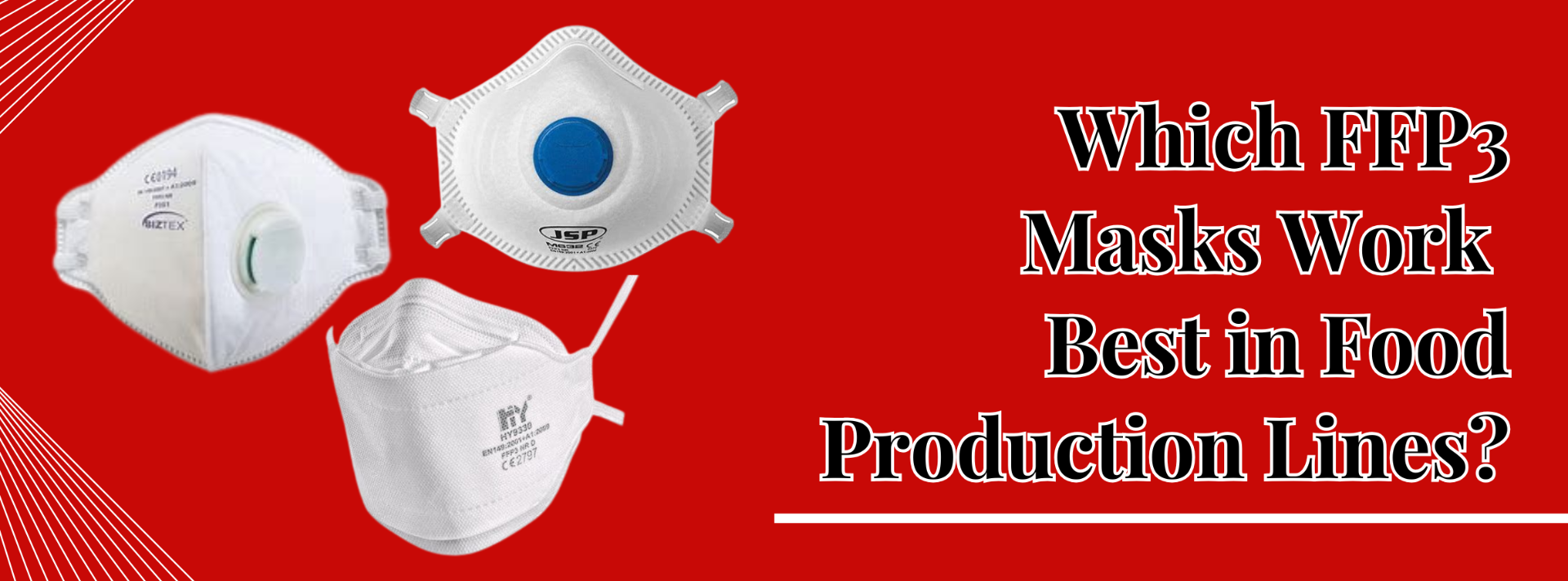
Have you wondered what stands between a safe, uncontaminated food product and a costly production setback? Sometimes, it is just a respiratory mask on a worker’s face. In food production lines, the protective mask doesn’t protect the workers from airborne particles, but preserves the integrity of food batches from contamination, ensuring compliance.
In food manufacturing industries, every detail matters, right down to the masks that the team wears. A single slip in protection can put not only workers’ lives at risk, but also the brand’s reputation and image. Even if you have heavily invested in hygiene, quality control, and inspections, can you bet that masks on your line are the best fit for the job?
When it comes to a half-face mask, let’s understand which is best that keep the production run smoothly.
Why is Wearing an FFP3 Mask Essential in the Food Industry?
Most food production and processing businesses mandate that employees wear disposable FFP3 face masks as a protective barrier to shield their mouths and noses from droplets, saliva, or splatter that may occur when coughing or sneezing. In addition to preventing product contamination, the FFP3 mask would provide the wearer with basic respiratory protection if the production line produced airborne contaminants.
Moreover, some food processing operations require higher levels of respiratory protection, such as Sundstrom's powered air-purifying respirators (PAPRs) or Safetyware's self-manufactured FFP2 respirators to avoid hazardous contaminants.
For instance, during deep cleaning or disinfection, staff may be exposed to strong cleaning agents or chemical residues. In facilities processing nuts, soy, or other allergens, individuals with sensitivity need to wear FFP3 masks or PAPRs. Other examples include power handling and mixing and meat and poultry processing.
Masks vs. Respirators: What Is Best For Food Production Line Workers
We are all extremely familiar with masks, but what distinguishes a respirator from a mask in terms of its use in food production? Masks are primarily worn to protect the food’s integrity from contamination caused by the wearer, but the respirators are engineered to protect the worker from inhaling harmful air-borne particles. Let us understand the key difference:
Respirators:
The purpose of respirator mask is to safeguard the wearer’s respiratory system. They typically cover the lips and nose and are cup-shaped, sitting near the face and securely fastened with one or two pieces of elastic. There are numerous varieties of respirators; the sort you need will clearly depend on what is influencing the air quality, such as flour or cleaning agents. Some respirators contain valves for better air flow, improving wearer comfort.
Masks:
Although they are employed as a precaution, masks also filter the air we breathe, albeit less effectively than respirators. Similar to respirators, mask standards and ratings differ by regions, so it's important to consult a mask comparison chart to fully understand the efficacy of your mask or respirator and guarantee National compliance.
Top FFP3 Masks For True Protection
The activities carried out, such as those involving dust, chemicals, or fine powders, can impact the air quality in many settings within the food processing sector. Although our lungs can naturally filter out hazardous particles and endure a modest amount of exposure, exposure can cause a buildup that could cause long-term harm.
Because fumes and/or powders cannot disperse, confined areas are also dangerous. Therefore, it's crucial to safeguard our respiratory system and ensure we're not transmitting germs, especially while handling food. How can we figure out what we need?
FFP3 Non-Valved Mask (HY9330)
This is a trusted, standalone disposable mask which delivers FFP3-grade filtration with 99% efficiency. It can filter particles as small as 0.3 microns, making it suitable to shield dust, contaminants, and biological matter. This is EN149:2001 certified with APF20 protection. Its efficient and valveless design reduces the risk of contamination from airflow. Besides, its flat-fold 3-panel design, individually-sealed structure supports comfortable wear, hygienic handling, and storing. The mask is latex-free and metal-free.
Fold Flat FFP3 Individually Wrapped
The Fold Flat FFP3 mask is a highly compact and lightweight FFP3 mask, individually packed to ensure cleanliness before use. This makes it helpful in sensitive food environments. A valve is given in the mask, which improves comfort as heat buildup can be reduced and the mask can be worn for a longer period. It is approved as per the EN149:2001 and A1:2009 safety standards. The mask is dolomite tested and is less likely to clog in the dirtiest environment.
Moulded Disposable Mask (M632)
The M632 mask is designed for demanding work environments, which is an FFP3 disposable respirator with a minimum 99% filtration efficiency, delivering both protection and comfort during extended wear. It's moulded foam in cup shape with a covered nose bridge, creating a secure fit around the face, reducing the inward leakage and ensuring consistent protection against air-borne particles present in the food production line. It has 4-point adjustable strap, which allows for complete adjustment for different face shapes.
FFP3 Masks: Ensuring Safety in Food Production
PPE such as the advanced FFP2 and FFP3 masks for the food industry establishes a barrier between the food being served to customers and the skin of the employee. To ensure the safety of both clients and employees, staff members should wear appropriate masks with necessary safety procedures when handling or serving food, such as washing their hands between duties. It guarantees the security of both employees and clients.
So, order a powered respirator and genuine personal protective equipment (PPE) from Respirator Shop. Explore our range of FFP3 protective masks with P3 filters to ensure more protection in diverse environments and workplaces!

